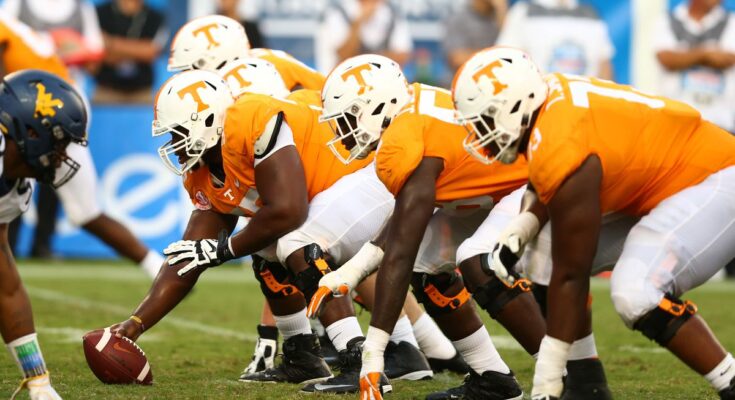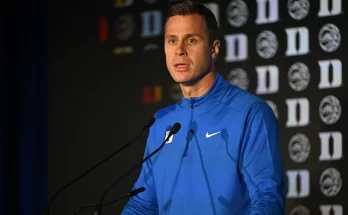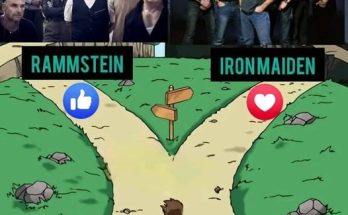For years, the University of Tennessee football program has chased national relevance through flashes of brilliance, historical pride, and a passionate fan base desperate for consistency. In college football, games are often won and lost in the trenches, and a dominant offensive line has long been the elusive piece for the Volunteers. That changed in recent recruiting cycles, where Tennessee appeared to build what many believed could be the greatest five-star offensive line in the program’s history. The excitement was real. The expectations were soaring. But just as quickly as it seemed like the line would be solidified, signs began to emerge that not all was settled. A cornerstone recruit, once seen as immovable in his commitment, has begun to waver, and the implications could be seismic.
Tennessee’s recruiting efforts in the offensive trenches took a dramatic turn in the right direction with the commitment of David Sanders Jr., a towering offensive tackle and consensus five-star prospect. Standing at 6-foot-6 with elite athleticism and technique beyond his years, Sanders wasn’t just another top recruit — he was the kind of generational prospect that programs build entire offensive philosophies around. His commitment was a loud and public statement: Tennessee was serious about building dominance from the inside out. Sanders represented not just talent but hope. He was supposed to anchor the line for years and potentially follow in the footsteps of legendary Volunteers who made their mark at the next level.
Sanders’ commitment was only the beginning. Alongside him came Nic Moore, a powerful interior lineman with a mean streak and exceptional leverage technique. Though technically a four-star by most services, Moore played with the kind of power and versatility that programs covet. Then came Gabriel Osenda, another five-star tackle in the following recruiting cycle, whose raw strength and athletic ceiling made him an ideal complement to Sanders. With Sanders and Osenda bookending the line, and Moore holding things down inside, Tennessee looked to be building a fortress.
At one point, projections showed a potential starting five composed entirely of elite recruits, including transfer Lance Heard, a former five-star himself, who brought valuable SEC experience and immediate production. Wendell Moe Jr. and Sam Pendleton, brought in via the transfer portal, added depth and experience. Suddenly, Tennessee had the pieces in place not just for a good offensive line, but a dominant one — potentially the best in school history in terms of raw talent, rating, and future projection.
But talent is only part of the story in college football. Chemistry, development, and commitment play equal roles in whether a recruiting class actually delivers on its promise. And this is where the Volunteers’ dream scenario started to fray. Though Sanders had been firm in his verbal commitment, reports began to surface that his enthusiasm had cooled. The early signing period came and went without him putting pen to paper. It was a noticeable absence — not the type of silence that gets dismissed easily. Insiders began to speculate that other programs, perhaps offering more NIL incentives or presenting stronger immediate playoff potential, had re-entered the conversation.
This development was more than just a recruiting hiccup. Sanders was the face of the offensive line class — arguably the face of the entire recruiting effort. His presence helped draw attention to Tennessee’s progress on the trail, made the program more appealing to other linemen and skill players, and suggested a turning point for Josh Heupel’s vision of a balanced, explosive team. Losing Sanders, or even just the uncertainty surrounding him, cast a shadow over the entire unit. It shook the image of stability and momentum.
The situation was further complicated by the loss of Douglas Utu, another highly-rated lineman originally committed to Tennessee. Utu, widely projected as a guard, reportedly desired to play tackle. When it became clear that Tennessee saw him on the interior, he flipped to another program where his positional preference was guaranteed. That kind of departure, especially in conjunction with Sanders’ hesitation, raised questions about whether the Volunteers were overpromising or struggling to meet the evolving expectations of five-star recruits in the NIL era.
Recruiting is a delicate game. One big commitment can start a domino effect in your favor — but one decommitment, especially from a headliner like Sanders, can do the same in reverse. Programs that seemed out of the picture can jump back in. Negative recruiters use the uncertainty as ammunition. And fans, boosters, and media begin to wonder if what seemed like a breakthrough was simply a mirage.
None of this is to say that Tennessee’s offensive line future is doomed. Even if Sanders departs — and that still isn’t a certainty — the Vols still possess a strong core of young linemen and portal veterans. Moore remains on board and could be a multi-year starter. Osenda’s upside is as high as anyone in the country. Heard’s presence brings leadership and proven SEC experience. Moe and Pendleton offer immediate depth, something Tennessee has lacked in recent years.
Still, the situation underscores how fragile recruiting success can be, especially when built on a small number of elite talents. Five-star offensive linemen don’t grow on trees, and even when landed, they’re rarely guaranteed to stay committed through signing day or produce at an elite level without strong development and positional support. Tennessee has built a foundation, but its long-term viability remains dependent on more than just talent acquisition.
Historically, Tennessee has had outstanding offensive linemen — Michael Muñoz, Antone Davis, Cosey Coleman — but they were spread out across decades, not grouped in a single class or two. The program never quite assembled a full five-man unit of five-stars playing together at one time. That possibility, for the first time in program history, felt within reach in the 2025–26 window. If realized, it would mark a watershed moment, redefining Tennessee’s identity in the SEC not just as a spread offense team but as one capable of dominating physically.
It’s that possibility — of power, balance, and sustained success — that makes Sanders’ uncertain status so pivotal. Tennessee isn’t just fighting to retain one player; they’re fighting to retain a vision. A vision where the offensive line doesn’t just hold its own against Georgia and Alabama, but bullies them. A vision where Tennessee quarterbacks have time to throw, where running backs run behind a wall, and where recruiting battles tilt naturally in the program’s favor because of past success.
This scenario is still alive, but its path forward has narrowed. Sanders could still reaffirm his commitment. The coaching staff could stabilize the class with late additions or portal reinforcements. Player development and on-field success in 2025 could also create a feedback loop that makes Tennessee even more appealing to future linemen. But for now, the program stands at a crossroads.
The greatest five-star offensive line in Tennessee football history may already be assembled — or it may be a dream one recruit away from collapse. That’s the nature of modern college football. Recruiting is fluid. Loyalty is conditional. And dreams, even those built on talent and planning, are subject to the whims of 17- and 18-year-olds faced with impossible decisions and millions of dollars in opportunity.
Tennessee is not alone in facing this dynamic. Every major program contends with it. But for a team that has struggled for years to find consistent footing in the SEC, building an elite offensive line wasn’t just a recruiting win — it was a statement of identity. That identity now depends on whether the final pieces hold firm, or whether the momentum unravels before it fully materializes.
In the end, the story of Tennessee’s five-star offensive line is still being written. It may end as the greatest front the program has ever seen. Or it may become another chapter in the long, frustrating history of what might have been. Either way, what happens in the next few months will echo in Knoxville for years to come.



